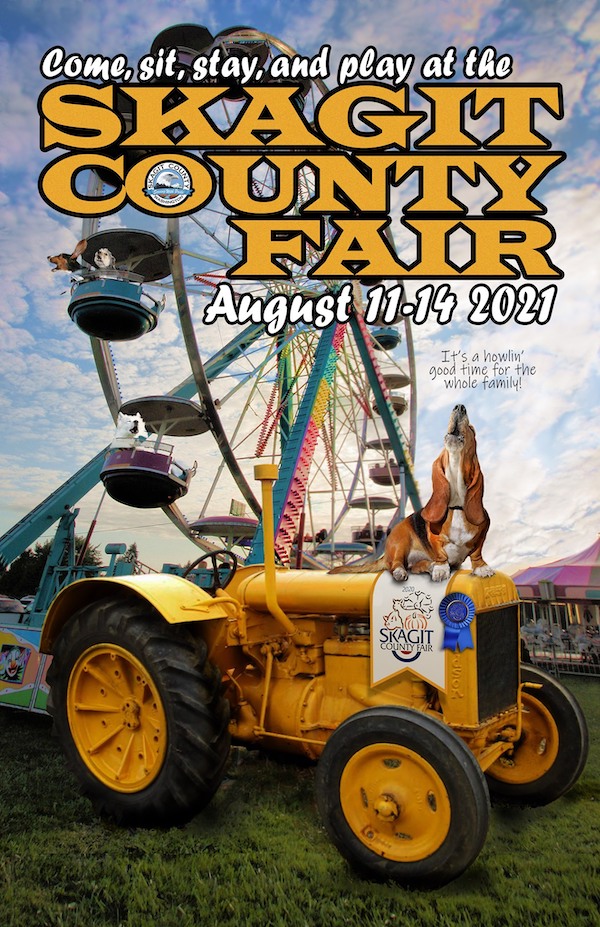Tales From the Magic Skagit: Confessions of a Fair Wrangler
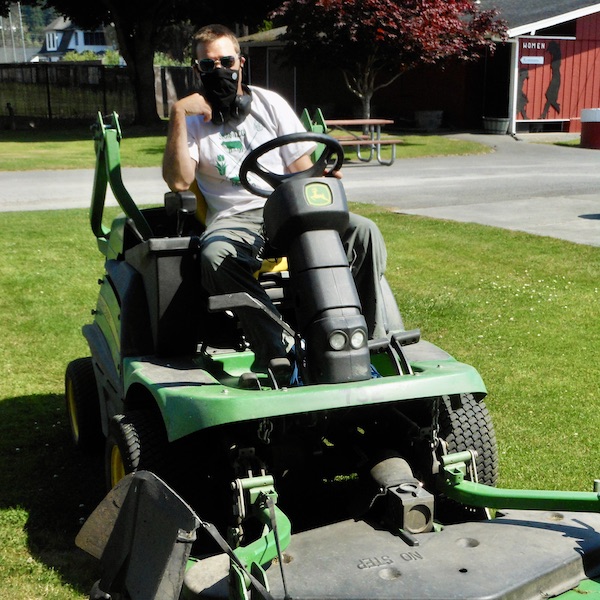
It was a weird August for Aric Gaither, the Skagit County employee whose title, “Fair Manager,” is a study in understatement. In a normal year (for those of us who still remember what “normal” looks like), the late summer months for Aric would be a frenetic whirl of spreadsheets, logistical minutiae, the constant flux of sometimes conflicting interests and agendas, and the kind of cat herding that can only come from coordinating the efforts of volunteers and interns in an environment in which, not unlike a military campaign, the best laid plans can go out the window in a heartbeat.
Even for a self-professed “Type A” personality such as Aric Gaither’s, pulling off the Skagit County Fair every year induces a level of stress for which the motivating compensation is the sheer love of the outcome, and the promise of retreating to the mountains upon its conclusion. It’s a cycle that has defined Aric’s professional life since being thrust into his current role at a pivotal point in the Fair’s history. In fact, it’s no exaggeration to say that the Skagit County Fair as we’ve known it for the past decade bears the imprimatur of its manager’s obsession with making it much more than a cherished family entertainment event. To quote Aric, “There are a lot of great events that do a lot for our community, but I would say that there is no other that brings together such a wide demographic and such a wide variety of things in one place.”
Which is why the absence of our local fairs this year leaves us with such a sense of loss. No offense to Summer, but take the Fair out of August and what’s left is heat, dust, smushed grasshoppers, and wilted vegetation. And the absence of the Fair during a time of crises only makes its loss more profound. If there was ever a year that we needed the Fair, 2020 is it. And who better to appreciate that fact than the individual who can justly be thought of as the Skagit County Fair’s answer to the late rock ’n roll impresario, the late legendary Bill Graham.
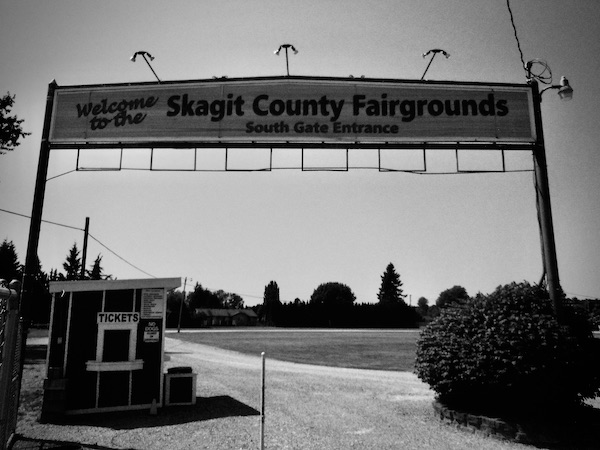
In retrospect, Aric Gaither’s assumption of his role at Skagit County Parks and Recreation seems almost ordained: the right personality with the right skill set at just the right time.
Aric has lived in Northwest Washington since age six, prior to which he lived briefly in California and Alaska. “My earliest childhood memory is the 1989 earthquake in San Francisco, during the World Series,” he recalls. “I mostly grew up in Anacortes.”
With the great outdoors in his DNA, Aric pursued a recreation management major at Western Washington University, with a minor in business. The love of mountains and wild landscapes remain not only Aric’s passion, but a major asset in his professional as well as personal life. “I do enjoy people, and working with the community is awesome, but after the Fair you are humanly exhausted — so I guess you can’t call me an extrovert through and through. It’s what the job entails, but the recharge that I get from going up to the mountains is a key to my success.”
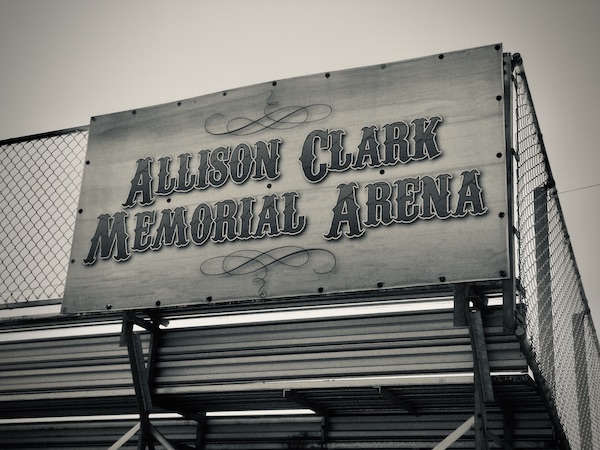
Aric graduated from Western in 2008 and was hired by the County, where he initially developed “recreation and enrichment” programs for Parks & Rec. In 2009, the Fair’s operational budget was removed from the general fund, which meant it would no longer be supported by taxpayer dollars. Aric describes 2010 as a “challenging year” in which the Fair had to operate on a totally different model, and the County responded by appointing Aric to lead it through the transition the following year. The Fair has turned a profit ever since.
Nearly a decade after becoming Fair Manager, Aric describes his career path with characteristic modesty. “I fell into it for no other reason than I was in the department and someone needed to do it who had some organizational experience.”
“Doing this job you need an extreme amount of soft skills,” Aric explains, “but there are a lot of more technical components for which you have to know the people who can help you out. You have to figure out how to get it done, be extremely organized, be nice to people and be good to work with. These are the basic skills that you need to do this job well.”
To get an idea of what it’s like to be the Fair Manager, imagine cat herding — but with large and somewhat unpredictable and unruly cats. “To truly understand the Fair, you have to understand that it is literally a wild animal,” is how Aric explains it. “I’m super Type A, but I often have to tell people that are looking for an answer to something that we are going to have to wing it, which is hard for some people to digest. I have to explain that while there’s a plan, I know that the plan is going to get torn up — so let’s develop a pseudo-plan and deal with reality as it happens.”
“There are always people in certain sections of the Fair who know how to manage their sections, but you have to have the central ‘brain’ and a workforce to balance all of them. There are a wide variety of needs between a commercial vendor and the exhibitor in an animal barn, and these worlds sometimes collide. You have to be able to walk into a situation and deal with it and with the person, or type of person or sector that they are from, and sometimes you have to interact with them in very different ways. It’s not two-faced, it’s flexing your personality style to your clientele.”
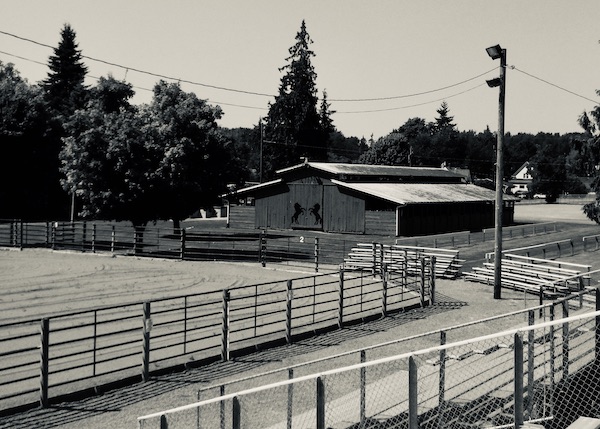
As Aric will tell you, the “Fair clientele” extends far beyond attendees (which currently number around 25,000), and includes the major constituencies and moving parts characterized as vendors, entertainers, exhibitors, and the carnival. And of course, there are the roughly 80 sponsors — about half of whom provide in-kind donations — who help make all these components viable. The needs of these constituencies vary greatly, as do their contributions to the Fair’s success. Balancing these needs is a constant dynamic that occupies Aric and his team of volunteers, interns, and employees during the Fair and in the months leading up to it. “You can do something that helps one group and completely derails another,” Aric notes.
“The vendors are the people who pay us to be here,” says Aric, “and in that sense they are our customers. We have about 60 commercial vendors and 20 food vendors. Managing them takes a lot of work, but they are a good revenue source. We made about $55,000 from our vendors last year. We do a percentage with food vendors and a flat fee for commercial.”
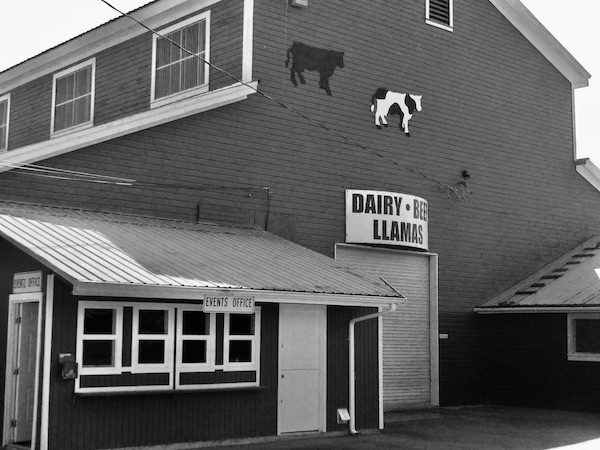
And then there are the entertainers. “I would like to dispel the notion that entertainers don’t get paid, or that they pay us somehow. It’s a reasonable question if you haven’t worked with the Fair, and there are occasions when a person will play for exposure — but the common practice is to pay entertainers. Some of these folks do this for a living, playing maybe 50 shows a year. They spend a lot of time trying to get those 50 shows, and that may represent their income for the year.”
“There’s a lot of communication that has to happen ahead of time with entertainers. You have to hire them and schedule them, and if they are from out of town you try to get a hotel for a comp night. Until they get on stage you have no idea what they should be doing, so we just get out of their way. It’s the same with the sound crew. You have to find the right people, trust them, and then get out of their way. Last year we added a fourth stage dedicated to Latino acts. It was an experiment, and there were some logistics issues that made me really nervous, but it was an awesome addition to the Fair. The Latino community is very family oriented and is very supportive of the Fair — they are really good customers when it comes to supporting events and coming out and having a good time.”
“The carnival is an interesting piece of the mix. It sets up and pays the Fair a percentage of what it makes, and it’s pretty self-sufficient. They know what they are doing. The tension we have to maintain is that the carnival wants to make money, and to do so they would like to take up more of our parking area. I want to give them more space, but we still need room for people to park so we can get more customers.”
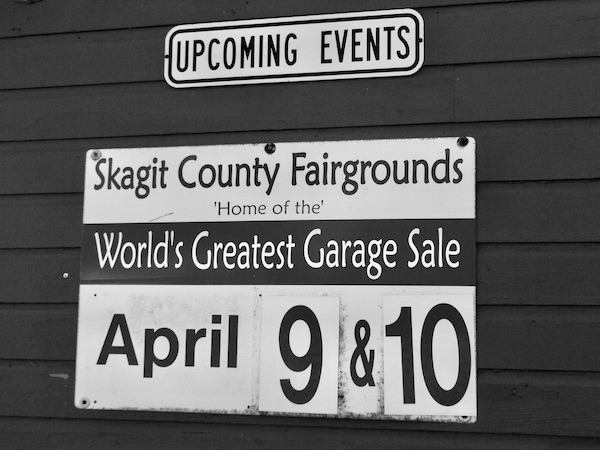
Managing the wide variety of Fair exhibitors is a task that is thankfully aided through online registration systems and some dedicated outside talent. “We bring in an expert, Margaret, to help with all the entries. She does this for six other fairs as well. We also have a great 4-H coordinator named Dorothy, and we have FFA (Future Farmers of America) whose leadership I can rely on. Indoor exhibits like quilts, canning, baking, flowers, photos, and art don’t come with a support system, so we have volunteer superintendents for those activities. We rely on them to know their areas of expertise.”
There is a certain perception about the Fair that Aric would like to vigorously address. “From my point of view, when someone says ‘the Fair runs itself at some point,’ I just want to dispel that notion. There are many self-sufficient pieces and people who do a lot of things for the Fair that I don’t know how to do, but that being said, there is ‘manual intervention’ all over the place. Due to the way we’re staffed, I can’t always get the same set of people back, so there are a lot of things you have to step in on. I will tell you that three of my least stressful days out of the Fair and the two months leading up to it are the second, third, and fourth days because of all the stuff we have to do on the front end. There are so many layers to the things that are going on that you can’t really delegate unless that person is going to be with you every year for the next 10 years. During the Fair people know their roles and are doing them, whereas ahead of the Fair there are just things that require me to stay put in the office for 15 hours at a stretch.”
And you thought making signs was a complicated business. Mere child’s play next to putting on the Fair.
The process of getting the annual Fair off the ground begins as the previous year’s Fair concludes. “We’re pretty busy through the end of September with tying up loose ends, cleanup and maintenance, September rentals, and the Fall Garage Sale. During this period we’ll send out ‘save the date’ notifications, and then there is the official Fair Conference in October. After this conference I have a renewed excitement because you learn about new stuff and discover new entertainers. That point forward in mid- to late-October I consider ‘planning season.’ I’ve learned to reach out sooner than that to new entertainers to get a sense of what is going to happen at next year’s Fair, which helps in asking for sponsorships — and some of the sponsors need for you to get to them by October, since that is when they are doing their annual budgets.”
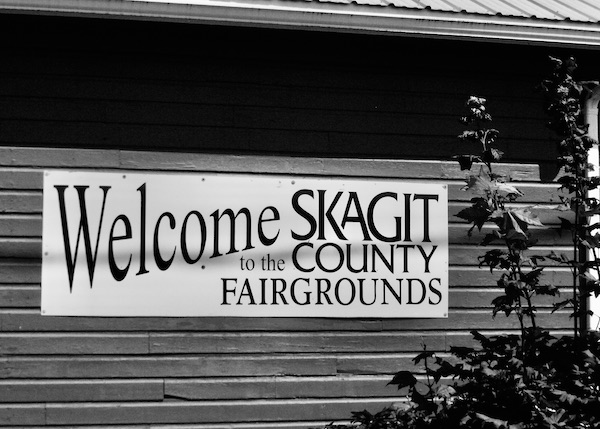
There are points in the midst of this planning period when Aric will come out to the Fairgrounds just to do some lawn maintenance and rake leaves. But by January the process gets back in gear with applications sent out and received for things such as camping permits, and the cash flow for that year’s Fair begins. “There is a lull in March and April, but by mid-April it is full-on Fair stuff, networking, vendor enquiries to respond to, and studying overhead maps to figure out how to utilize every square inch of space. I’ve used a drone to help with this. Ironically, cramming anything into a tight area these days seems like the worst thing you could possibly do.”
Which, sadly, brings us to the subject of the Great Pandemic of 2020 and the cancellation of this year’s Fair.
“Cancelling the Fair in May was not a hard decision,” Aric says. “What followed from that was hard. The Fair is set up to make more than we spend, so we are in a position to weather things this year. But in all reality, by May of 2021 I hope not to have limits to our capacity to do what we need to do. Hopefully we’ll have a vaccine before then, but there are other steps we can take short of a full-on return to a normal Fair. My greater concern is for our vendors and entertainers. A lot of those people will be able to survive a year because a spouse has income, but this has to end by next summer because people won’t be able to take two years off from a profession and income. That said, next May feels like a long ways away. I just hope there is some ability for venues to be able to consult local health authorities and work out a plan — but a vaccine would be best.”
You can’t speak with Aric about his job without at some point wondering, if not asking, the obvious question: How do you keep from burning out?
“I think there are two components to how you do this year in and year out,” Aric explains. “It’s your own personal time away from it, and there is the sense of satisfaction about the Fair that not every job has. If you’re running spreadsheets all day in an average job you may toil behind them and not see the product in action. Seeing it happen is a very tangible rush of feedback. You can’t help but walk around and think, ‘Wow, this is satisfying.’ Personally, my favorite thing is just walking through the Fair on days two through four. On Day One I’m notorious for not being your favorite person to greet. If someone tells me not to be stressed, I would say that if you’re not walking around on Day One and pulling your hair out, then you’re missing something. But there are always delightful things happening that you don’t even know about. For example, I just discovered last year that we have chicken races out between the small animal barns. I learned about it from the Fair program. And it’s fun to just watch people being happy. As much as you might want to treat it as just a job, it becomes more than that. At certain times of the years it becomes your life.”
For Skagit County Fair Manager Aric Gaither, what has become his life also happens to be an enormous contribution to our Magic Skagit community. Asked why the Fair matters, particularly at a time when its absence is so keenly felt in our communal lives, Aric has a ready answer. “It is culture, business, entertainment — it all comes together, and I don’t know how to put that all in one box and tell you what it means except that it is a place where we come together and celebrate every year. The Fair is a fun, educational time to gather and celebrate, whether at a surface level from the standpoint of family entertainment, or as a sort of Super Bowl event for the 4-H kid who has worked all year to show an animal. A lot of business is generated and done here as well. It’s a job for some people. It supports a lot of livelihoods.”
I don’t know about you, but I’m looking forward to the return of the Skagit County Fair in 2021 — and to celebrate, I’m going every single day. I figure this will give me eleven months to decide between a corn dog or an elephant ear (with butter and cinnamon sugar, thank you very much) as my first celebratory meal. I’m not a fan of summer, but as long as there is the Fair, I can’t wait for August.
